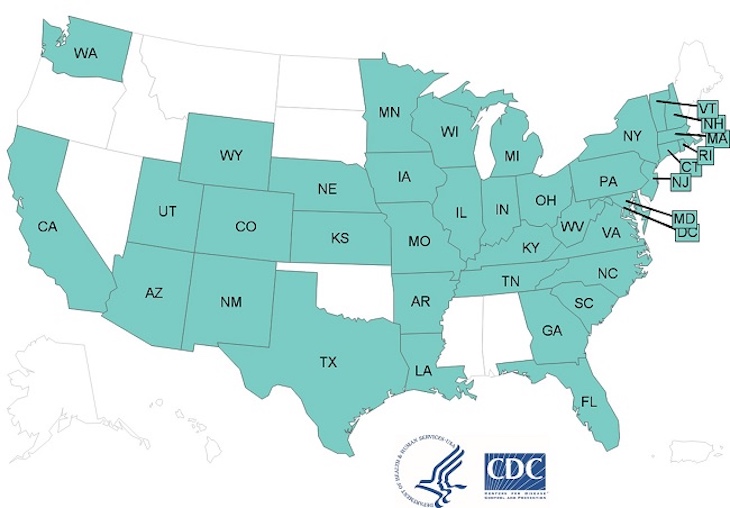Cyclospora is the number one multistate food poisoning outbreak for 2019, with more than 2400 people sick. This wasn’t an individual outbreak, but many individual cases and several outbreaks linked to a venue or product. The overall number of domestically acquired cases is higher than those from 2017 and 2018.

These are the outbreaks of cyclosporiasis linked to a venue or food:
- An outbreak associated with workplace cafeterias in Virginia that sickened at least 39 people.
- A large cyclospora outbreak at Cooper’s Hawk Winery in the Jacksonville, Florida area sickened at least 132 people in 11 states.
- An outbreak in Minnesota sickened 35 people and was associated with three restaurants located in different areas of the state.
- Cyclosporiasis illnesses in New York City in July sickened more than 90 people.
- A Boston Cyclospora outbreak, also in July, sickened more than 100 people.
- A cyclospora outbreak linked to Siga Logistics de RL de CV basil imported from Mexico sickened more than 240 people. this was the largest individual outbreak in the overall case count.
Cyclospora is a microscopic parasite that is endemic to tropical and sub-tropical regions of the globe. It is not passed person-to-person because it needs time to become infectious after it is passed in bowel movements.

You can contact food safety attorney Fred Pritzker and his team for help if you have contracted cyclosporiasis by calling 1-888-377-8900 or 612-338-0202.
Symptoms of cyclosporiasis include frequent and explosive watery diarrhea, weight loss, loss of appetite, stomach cramps and pain, increased gas, bloating, nausea, fatigue, vomiting, body caches, low great fever, and headache. Symptoms usually begin about 1 week after a person eats food or drinks liquid that is contaminated with the parasite.
There is treatment for this illness, but it’s sulfa based. That means that anyone who is allergic to sulfa products doesn’t have a good option for treatment. The illness can recur months later without warning if it is not treated.




